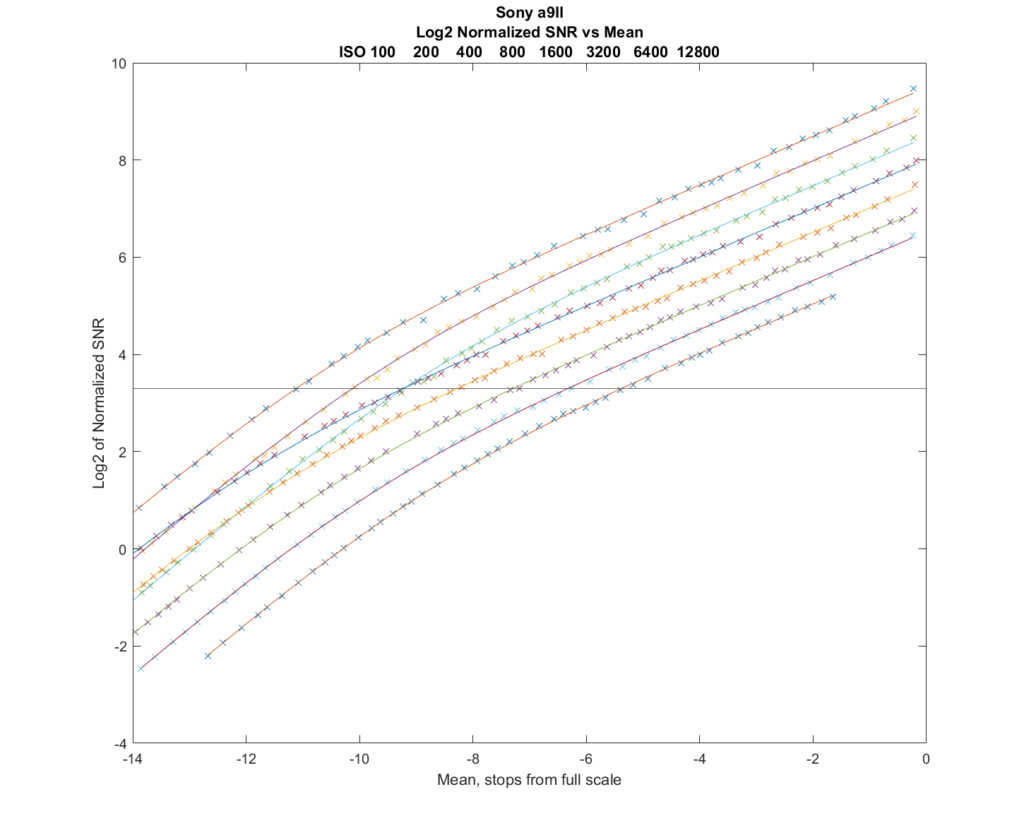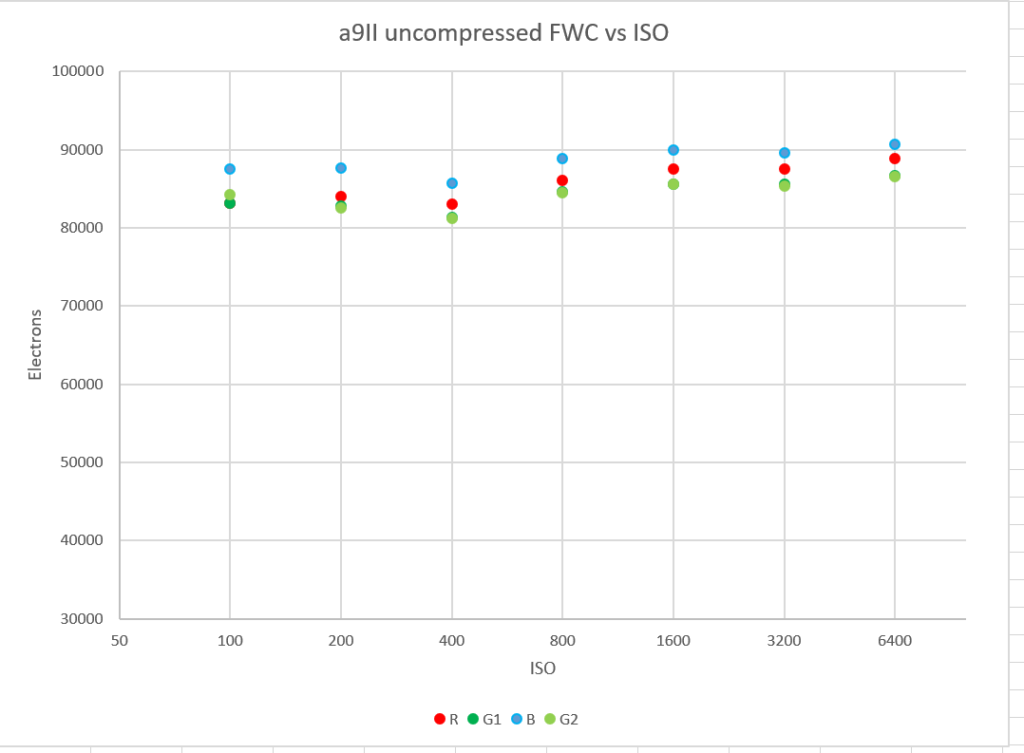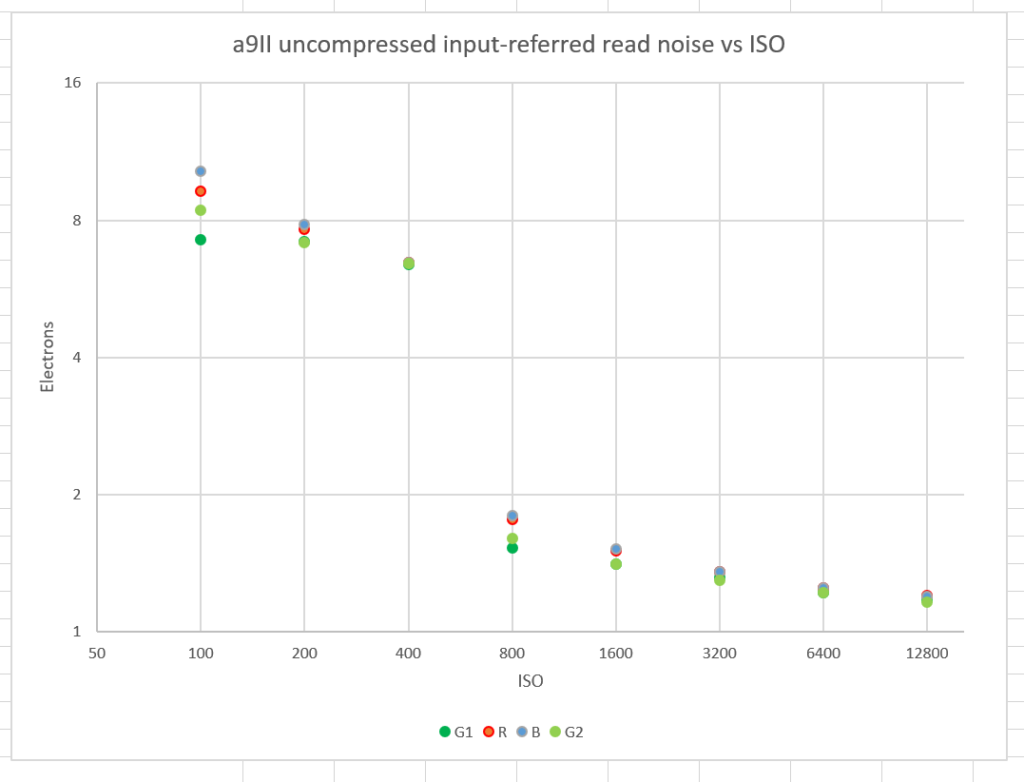This is one in a series of posts on the Sony a9II. You should be able to find all the posts about that camera in the Category List on the right sidebar, below the Articles widget. There’s a drop-down menu there that you can use to get to all the posts in this series; just look for “a9II”.
This morning, I ran a photon transfer curve (PTC) for the a9II, which allows me to calculate the input-referred read noise (RN) in electrons, the full well capacity (FWC), and the photographic dynamic range. Not that it matters, but I used a Batis 135/2.8 lens for this job. The lens doesn’t matter much, since I defocus heavily.
A set of normalized photon transfer curves:
The mean signal level, in stops from full scale, is the x-axis. The y-axis is the signal to noise ratio, normalized to an 8-inch print viewed from 18 inches away using the same methodology that Bill Claff uses for his PDR measurements. The top curve is from ISO 100, the next for ISO 200, and so on. The measured data points are the crosses, and the modeled approximation is the solid lines. There is excellent agreement. The solid black line is the Claff SNR, and the value of the x-axis where each curve crosses the black horizontal line is the Claff Photographic Dynamic Range for that ISO setting.
Note the high shadow SNR at ISO 800. The a9II changes to higher conversion gain at ISO 640, which makes the read noise drop, and that makes the shadows less noisy.
The modeler program that I wrote tell me what the full well capacity it found for each ISO setting and each raw plane. Here’s what that looks like:
In a perfect world, all the FWCs would be the same. Here they come close to that. The FWC of the camera is about 88,000 electrons. I measured the a9 FWC at about 92,000 electrons. That’s virtually the same.
Knowing the FWC, I can calculate the input referred read noise:
The jump downwards at ISO 800 is because of the increased conversion gain at ISO 640 and above. RN at high ISOs is approaching 1 electron, which is about the state of the consumer camera art these days. The low-ISO RNs for the a9 that I measured were a bit higher.
This sensor and the a9 sensor are peas in a pod.



Quote:” This sensor and the a9 sensor are peas in a pod.”
Meaning, from an IQ point of view the 2 cameras are pretty similar, right?
Indeed.
So the nosie in high iso is actually the same between the two ? But Sony claimed they improve the high iso noise much ? How come ? Thanks!
Essentially.
I never saw that claim. Please provide a link.